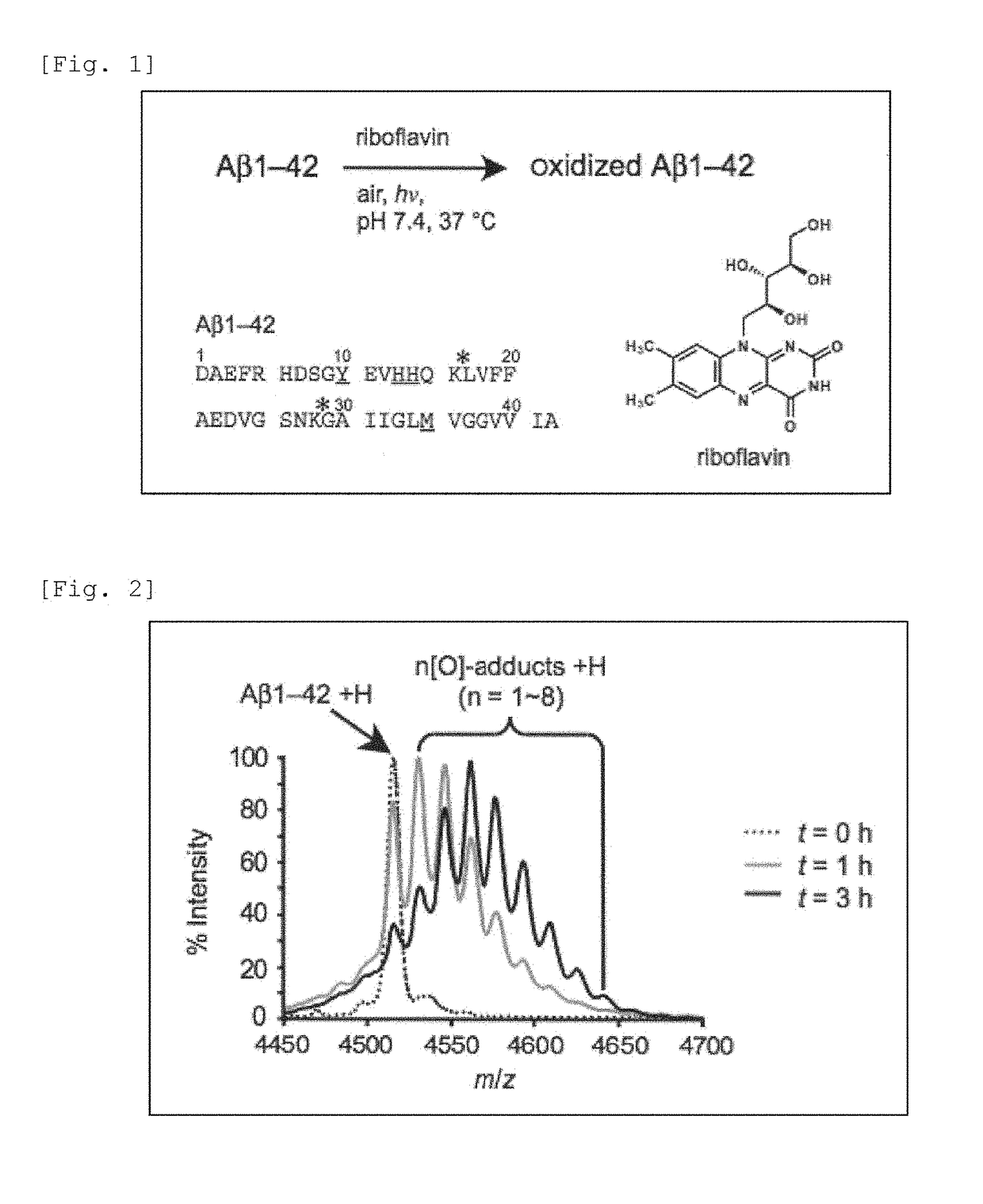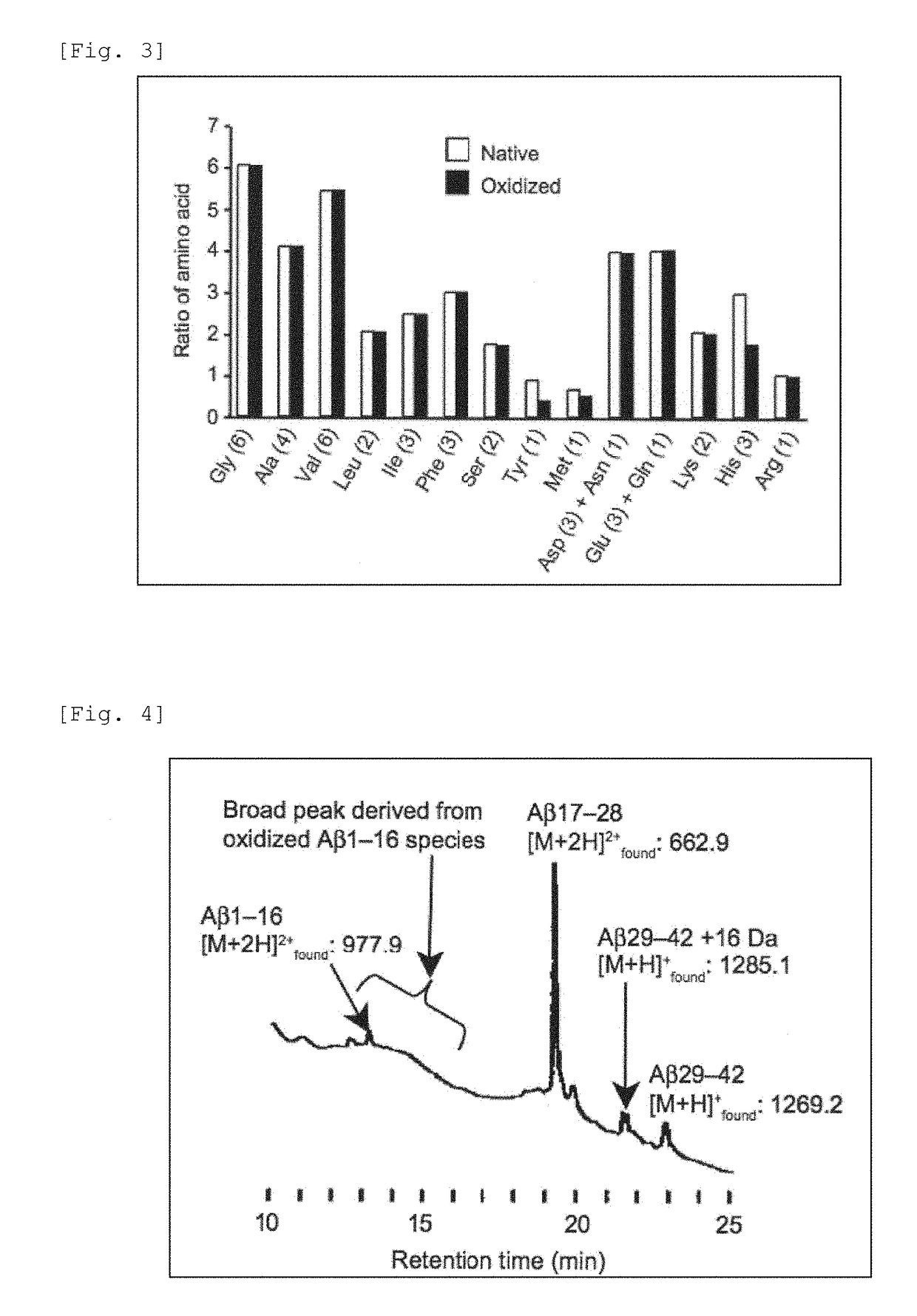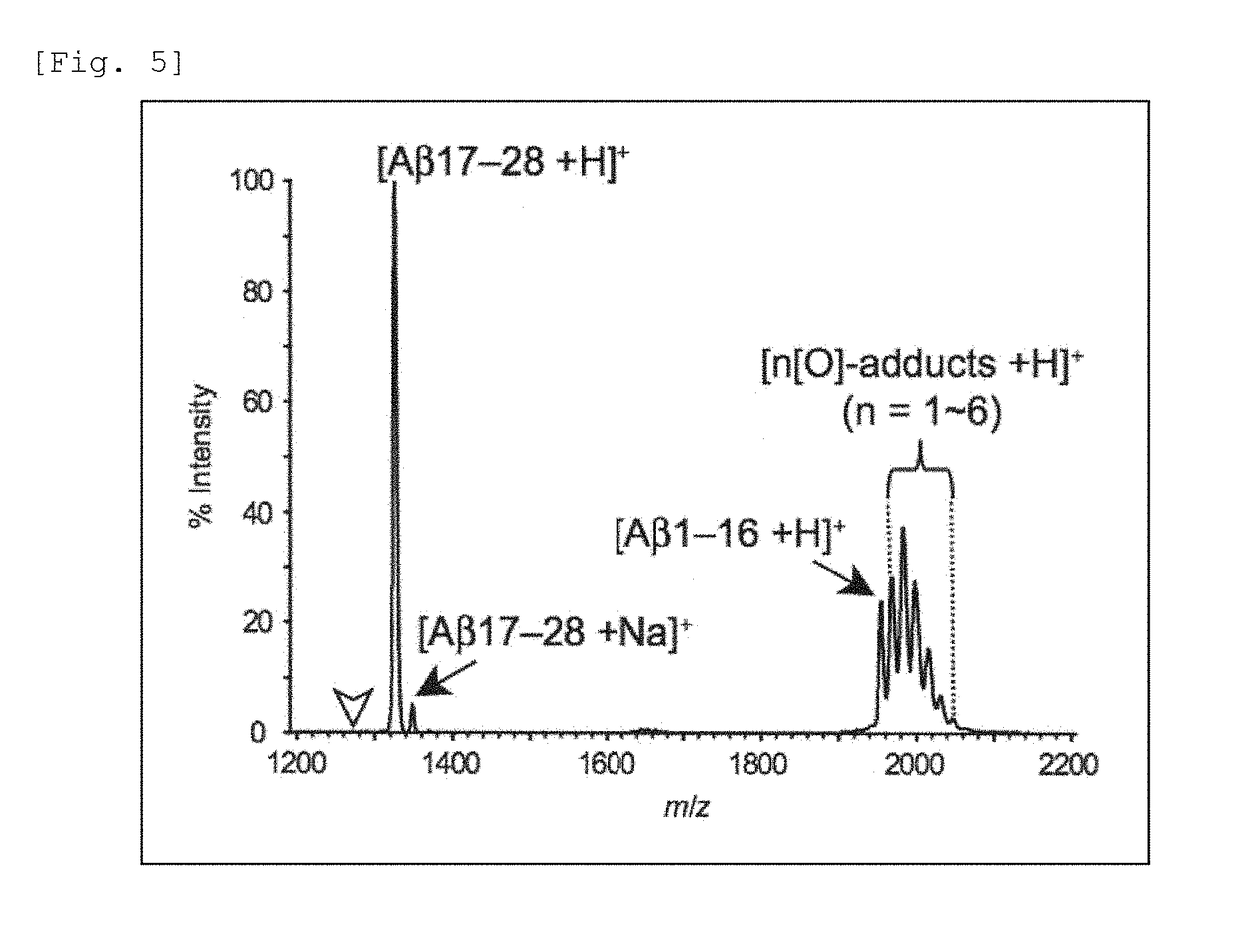Oxidized Aβ peptide
a technology of a peptide and a peptide, which is applied in the direction of peptide sources, peptide/protein ingredients, drug compositions, etc., can solve problems such as cognitive impairment, and achieve the effects of preventing and/or treating, and reducing toxicity of a peptid
- Summary
- Abstract
- Description
- Claims
- Application Information
AI Technical Summary
Benefits of technology
Problems solved by technology
Method used
Image
Examples
example 1
Details of Each Experimental Method
(1) Experiments of Thioflavin T Assay
[0085]A phosphate buffer (10 mM, pH 7.4) in which Aβ1-42 (20 μM) and riboflavin (4 μM) had been dissolved was incubated at 37° C. under irradiation with a fluorescent lamp (24 W, natural white, a distance between a light source and a reaction mixture was about 3 cm). A part of the reaction mixture (10 μL) was added to a 50 mM glycine-NaOH buffer (pH 8.5, 400 μL) containing thioflavin T (5 μM), and the resultant mixture was immediately mixed to measure a fluorescence intensity of thioflavin T. In the fluorescence intensity measurement, an excitation wavelength was 440 nm, and a fluorescence wavelength was 470 nm.
(2) Experiments of Atomic Force Microscope Analysis
[0086]A phosphate buffer (10 mM, pH 7.4) in which Aβ1-42 (20 μM) and riboflavin (4 μM) had been dissolved was incubated at 37° C. under irradiation with a fluorescent lamp (24 W, natural white, a distance between a light source and a reaction mixture was ...
example 2
Oxidation Reaction
[0089]A phosphate buffer (10 mM, pH 7.4) in which Aβ3-42 (SEQ ID NO: 1) (2 μM) and riboflavin (4 μM) had been dissolved was incubated at 37° C. under irradiation with a fluorescent lamp (24 W, natural white, a distance between a light source and a reaction mixture was about 3 cm) (FIG. 1), and the reaction was monitored by a mass spectrometer (MALD-TOF MS) (FIG. 2). After the reaction was carried out for 3 hours, along with disappearance of the raw material Aβ1-42, it was observed a spectrum of oxidized Aβ to which one to eight oxygen atoms were added. The same sample was analyzed for amino acids. As a result, the amounts of tyrosine and histidine were decreased to about half of a non-oxidized control sample (FIG. 3). By the same analysis, it was also observed that the amount of methionine was slightly decreased. The results revealed that the oxidation reactions of tyrosine, histidine, and methionine proceeded. Thus, by the results of a mass spectrometry measuremen...
example 3
Investigation of Aggregation
[0091]A phosphate buffer (10 mM, pH 7.4) in which Aβ1-42 (20 μM) and riboflavin (4 μM) had been dissolved was incubated at 37° C. under irradiation with a fluorescent lamp (24 W, natural white, a distance between a light source and a reaction mixture was about 3 cm) to provide a sample “oxidized Aβ”. A phosphate buffer having the same composition was reacted with no irradiation to provide a sample “native Aβ” as a control. Aggregation of each sample was evaluated by thioflavin T assay (it is known that fluorescence intensity of thioflavin T corresponds to the amount of an aggregate being rich in β sheet structure) (FIG. 11). At the incubation time of 3 hours and 6 hours, the fluorescence intensity of thioflavin T of the oxidized Aβ was significantly lower than that of the native Aβ. The results suggest that the oxidized Aβ has low aggregation. By the atomic force microscope analysis, fibril formation was clearly observed in the native Aβ, but hardly in th...
PUM
| Property | Measurement | Unit |
|---|---|---|
| mole ratio | aaaaa | aaaaa |
| flow rate | aaaaa | aaaaa |
| flow rate | aaaaa | aaaaa |
Abstract
Description
Claims
Application Information
 Login to View More
Login to View More - R&D
- Intellectual Property
- Life Sciences
- Materials
- Tech Scout
- Unparalleled Data Quality
- Higher Quality Content
- 60% Fewer Hallucinations
Browse by: Latest US Patents, China's latest patents, Technical Efficacy Thesaurus, Application Domain, Technology Topic, Popular Technical Reports.
© 2025 PatSnap. All rights reserved.Legal|Privacy policy|Modern Slavery Act Transparency Statement|Sitemap|About US| Contact US: help@patsnap.com



